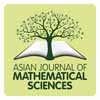MAGNETOHYDRODYNAMIC BIOCONVECTION FLOW OF WALTER’S – B NANOFLUID OVER AN EXPONENTIALLY STRETCHING SURFACE
Main Article Content
Abstract
The combination of nanofluids and bioconvection has a wide range of applications in biological systems,
agriculture, pharmaceuticals, biotechnology and industrial applications. This paper presents a numerical
analysis of the Magnetohydrodynamic bioconvection flow of a two-dimensional, steady, incompressible
Walter’s – B nanofluid flow in the presence of gyrotactic microorganisms over an exponentially
stretching surface. The Buongiorno model together with the Boussinesq approximation is adopted and
takes into account the effects of Brownian motion and thermophoresis in formulating the fluid flow
governing equations. The governing equations are non-dimensionalised using appropriate similarity
transformations. The resulting first-order ordinary differential equations are numerically solved using the
Shooting Technique together with the fourth-order Runge-Kutta method. Simulation of the model and
investigation of the effects of pertinent parameters on the fluids’ temperature, velocity, nanomaterial
concentration and dimensionless motile microorganism density is carried out using MATLAB bvp4c. It is
observed that the velocity field is enhanced with the Weissenberg number, Brownian motion parameter
and Grashof number but reduced with the Buoyancy ratio parameter and Thermophoretic parameter. The
temperature profiles increased with Brinkman number and Hartmann number nevertheless, the Prandtl
number has the opposite effect. The nanomaterial concentration and motile microorganisms’ density
profiles enhanced subject to Buoyancy ratio parameter, however, the Bioconvection Peclet number and
Bioconvection Lewis parameter have bi-influence toward motile microorganisms’ density profile.
Article Details

This work is licensed under a Creative Commons Attribution-NonCommercial 4.0 International License.
This is an Open Access article distributed under the terms of the Attribution-Noncommercial 4.0 International License [CC BY-NC 4.0], which requires that reusers give credit to the creator. It allows reusers to distribute, remix, adapt, and build upon the material in any medium or format, for noncommercial purposes only.
